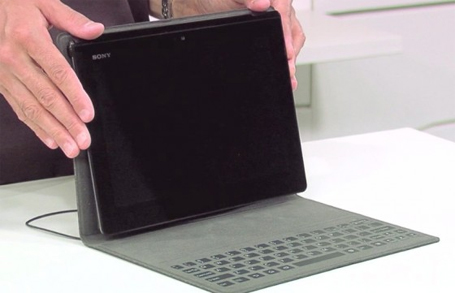Owners of the Sony Xperia Tablet S might want to be extra careful to not splash a glass of water onto their fondle slab now that sales have been suspended due to a manufacturing error, The Wall Street journal’s Digits blog reports.
The Android tablet is advertised as water resistant, but an apparent error in the manufacturing process has left a gap between the display screen and the back of the tablet. It’s just big enough hat water could seep through the crack and damage the electronics. Customers complained about the flaw, and Sony is blaming a manufacturing contract for the blunder. Now it’s not sure when the existing models will be fixed or when the Xperia will go back on sale.

Sony’s Xperia Tablet S has been pulled off store shelves. (Photo: Sony blog).
The error only affects six out of 10 Xperia tablets and even if you’re stuck with the defect, it doesn’t really impede your table usage in most situations. But the problem does raise one good question – how do businesses respond to product recalls in a bring your own device (BYOD) style IT environment?
In the days when every piece of hardware that employees worked with was issued and administered by the IT department, it was straight forward. If a recall was issued or an error came to light, IT could collect the devices from workers and return them to manufacturer for a replacement or repair. But if employees are using their own devices, it becomes much more complicated to track who’s using something that may have been recalled.
It may seem obvious to leave it up to the employees who bought the hardware to be responsible for its maintenance. But if your CEO find their tablet suddenly isn’t working after getting caught in the rain, that lost productivity could be expensive for the company.
One good approach may be for the IT department to educate users about the possibility of product recalls. Employees could also be encouraged to register their product with the manufacturer so they are e-mailed with critical updates related to their purchase.
And when in doubt, remember that in most cases, water and technology don’t mix.




